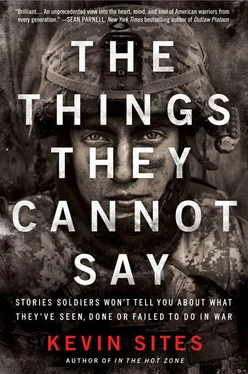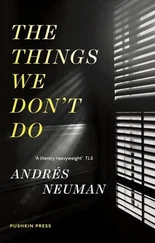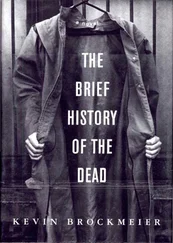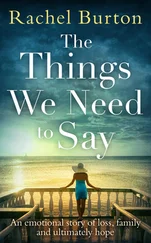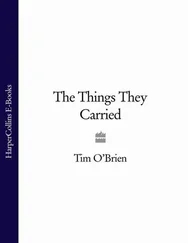Nidal was one of the lucky ones. He had been only slightly wounded in the leg. He was captured after the Marines took the mosque and was given medical treatment from Navy corpsmen along with the other insurgents. The Marine battalion commander assured me the wounded Iraqi prisoners were going to be transported back to field headquarters for further treatment and interrogation. But whether it was a lie or just an oversight in the heat of a furious battle, it never happened. Nidal and the other four survivors were left in the mosque overnight disarmed, untended and unguarded along with the stinking corpses of their ten dead comrades partially stuffed into American body bags. The next day a Marine lance corporal from the same battalion went back into the mosque and shot all of the wounded men again, except Taleb Salem Nidal, who covered himself with a blanket and was likely considered one of the dead. It’s unclear whether this Marine knew that these insurgents had been wounded and captured the day before, but he had to have some idea of the earlier engagement with the body bags still littering the mosque floor and the fact that the survivors were unarmed and sporting fresh bandages.
According to his own deposition in a Naval Criminal Investigative Service (NCIS) report, the Marine says he began shooting the injured Iraqis first with his M16 rifle, but when it jammed, he used his Beretta M9 pistol. I remember hearing the rounds while I waited outside the mosque. They were unhurried, with several-second intervals in between, the methodical nature of someone taking aim and shooting targets, rather than shots fired in fear or anger. Stranger and even more disturbing was what happened next. I entered the mosque with another Marine fireteam shortly after hearing the shots inside. I was surprised to see the bodies still in the mosque and even more surprised to see that four of the five wounded and captured insurgents who were supposed to be transported back to battalion headquarters were now either dead or dying from fresh gunshot wounds. Automatically, I began to document the scene, videotaping the dying men lying against the mosque’s far wall. As I did, I saw in the corner of my frame a Marine (the same Marine, I would learn later from the NCIS reports, who had shot the captured insurgents). I tilted up slightly as I heard him say of one of the wounded men he had just shot before I entered the mosque, “ He’s fucking faking he’s dead—he’s faking he’s fucking dead. ”
Then I watched through my viewfinder as he raised his M16 and fired one final round into the man. It was an execution shot from point-blank range, blowing his brains out against the back wall of the mosque in which he had been slumped. I saw the proverbial pink mist that anyone who’s ever witnessed a headshot claims to have seen. For a moment it mingled with the particles of dust riding the sunbeam from a mosque window to the rubble-strewn floor.
“He’s dead now,” another Marine said, uttering a statement so profoundly redundant that it seemed simply an exclamation point to the act. Then the Marine spun on his heel and walked away, as if he had done nothing more than dispatch a rabid dog. In a killing such as this, there’s a temporary vacuum in the air that sucks the breath out of anyone watching. I could feel my stomach rise to my throat. I knew that in this moment everything had changed. I had stumbled into a moral limbo where there existed the slippery concept that even in the mayhem of war, there were rules about killing. As technology was my witness, I had unwittingly become part of this unresolved conversation simply by pushing the red button on my camera.
When I confronted the Marine and asked him why he shot the man who had been wounded yesterday, he simply said, “I didn’t know, sir, I didn’t know.” He walked out with the other Marines and left me alone with Taleb Salem Nidal, who had pulled his blanket down and revealed his leg wound and the underpants he was wearing, his only clothing besides his shirt. He began talking to me in Arabic, asking me to help him. I watched him through my viewfinder, as I had the Iraqi who had been executed just moments before. Nidal’s arms were outstretched, pleading. I told him I didn’t speak Arabic, though the look on his face was clearly that of a man who knew he was in great danger, having just witnessed his wounded friends all being shot a second or third time. He fell back on his elbows, resigned, noting by my lack of expression that I would do nothing for him. He was right. I turned away from him as he lay on the floor, in his dirty white underwear, chunks of concrete and debris surrounding him.
I walked out of the mosque angered by the murder that I had just witnessed but somehow oblivious that Nidal could be next. I wanted to find the battalion commander and show him the videotape. Who was to blame? Was the Marine acting on his own or following orders not to leave anyone alive behind their lines of advance? [3] During my research, I discovered that on at least two other occasions Iraqi prisoners were executed during Operation Phantom Fury.
Ultimately it didn’t matter. NBC and I decided to self-censor the report and not show the actual shooting, assuming it might be too inflammatory. [4] I later independently released the entire raw video of the mosque shooting on NPR’s website.
Our actions botched the story. By agreeing to censor the video, we kept important information from being part of the critical public discourse during a time of war. I had failed in my duty as a journalist and that failure haunted me for years.
I went back to reporting on war, but I never stopped thinking about what had happened in that Fallujah mosque. Wanting some kind of closure, I filed a Freedom of Information Act request with the U.S. government, desperate to get any other details. In 2007, three years after the mosque shooting, the full report of the Naval Criminal Investigative Service arrived in my mailbox. It was the size of a Manhattan telephone book and heavily redacted (sections blacked out for privacy protection of individuals named in the case and purportedly for other national security concerns). I took a deep breath and dug in, uncertain what I would find. It took me only twenty minutes and what I read made my knees buckle.
Taleb Salem Nidal, the wounded Iraqi who had been under the blanket and had tried to talk with me after the shooting, was himself murdered sometime after I left the mosque. His autopsy report detailed that his death was the result of the twenty-three bullet rounds fired into his back. When I bumbled out of the mosque with my videotape to seek justice for one summary execution, I had set the stage for another by ignoring the obvious probability that it would happen again. And it did. Had I simply walked Nidal out of the mosque, he might’ve lived. He had been the only witness besides me. Left alone in the aftermath, he never had a chance. To this day, I can’t begin to fathom how I could have been so stupid. I never intended to get him killed, but with even a sliver more compassion in place of my “righteous” anger I might have saved him. His death is the pinnacle in the case against me. I have carried its burden ever since and in all but the last year or so, I’ve compounded the sin by bearing it with a complete and utter lack of grace.
My post-traumatic stress didn’t begin with the realization of that final crime, but it certainly took me pro. I had indulged in all kinds of bad behavior throughout my “war career.” Drinking, recreational drugs and empty sexual encounters were part of my damaged-foreign-correspondent repertoire. According to the former VA psychiatrist Jonathan Shay in his second book on post-traumatic stress, Odysseus in America: Combat Trauma and the Trials of Homecoming , veterans and I had a lot in common. “Veterans use many strategies to numb their pain, to silence the nightmares, to quell guilt,” he wrote. “Chemicals are only one such strategy, danger seeking is another, workaholism is another, sexaholism another still—and it is not an exaggeration to see it all.”
Читать дальше
